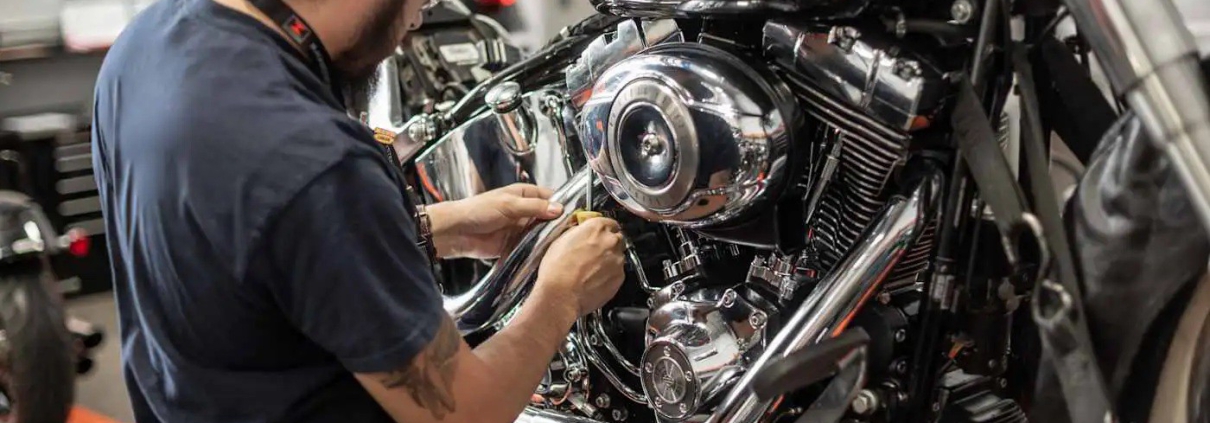Comprehensive Guide to Motorcycle Ignition Batteries: Performance, Types, and Technical Insights
Introduction
Motorcycle ignition batteries play a critical role in ensuring reliable engine starts and stable operation of the ignition system. Understanding the technical differences between battery types, their performance metrics, and real-world applications is essential for distributors and dealers offering high-quality products to riders. This guide focuses on battery specifications, comparative performance, and application considerations, with an emphasis on modern lithium starter solutions.
Types of Motorcycle Ignition Batteries
- Lead-Acid Batteries (Conventional SLI)
- Description: The traditional starter battery, widely used in motorcycles.
- Advantages: Cost-effective and widely available.
- Limitations: Heavy, short cycle life, and requires regular maintenance.
- Application: Standard motorcycles where budget considerations outweigh performance.
- AGM (Absorbent Glass Mat) and Gel Batteries
- Description: Sealed lead-acid variants with internal improvements.
- Advantages: Higher vibration resistance, lower maintenance, stable voltage output.
- Limitations: Slightly higher cost, heavier than lithium batteries.
- Application: Motorcycles operating in rugged terrain or exposed to high vibrations.
- Lithium-Ion Starter Batteries
- Description: Advanced lithium chemistry designed for high cranking performance.
- Advantages:
- Extremely lightweight and compact
- High cold-cranking current for instant engine starts
- Maintenance-free and long cycle life (3000+ cycles)
- Low self-discharge and wide operating temperature range
- Limitations: Higher initial cost than lead-acid batteries
- Application: High-performance motorcycles, racing bikes, or applications requiring weight reduction and extended service life.
For example, distributors can offer Leoch’s 12V motorcycle starter lithium battery as a premium solution. It combines compact size, high cranking power, and ultra-long life, making it ideal for modern motorcycles. View product details.
To explore how motorcycle batteries support both starting power and lighting performance in real-world applications, check out our detailed guide Understanding Motorcycle Battery Demands.
Detailed Technical Comparison
| Parameter | Lead-Acid SLI | AGM / Gel | Lithium Starter |
| Voltage | 12V | 12V | 12V |
| Capacity (Ah) | Medium | Medium-High | Medium-High |
| Weight | Heavy | Moderate | Very Light |
| Cold Cranking Amps (CCA) | Moderate | High | Very High |
| Maintenance | Required | Low | None |
| Cycle Life | 300-500 cycles | 400-700 cycles | 3000+ cycles |
| Temperature Tolerance | Moderate | Better | Wide range |
| Self-Discharge Rate | High | Moderate | Very Low |
Application Considerations
- Cold Start Performance: Lithium batteries maintain higher cranking currents at low temperatures, ensuring reliable engine starts even in extreme winter conditions.
- Vibration and Shock Resistance: AGM and lithium batteries handle vibrations more effectively than conventional lead-acid, reducing premature failures.
- Weight Sensitivity: Lightweight lithium batteries improve handling and efficiency, particularly for high-performance motorcycles.
- Maintenance Requirements: Lithium batteries are maintenance-free, while lead-acid batteries require regular checks and water refills.
- Battery Longevity: With 3000+ cycles, lithium batteries drastically reduce replacement frequency, lowering operational costs over time.
- Energy Efficiency: Lithium batteries deliver consistent voltage throughout the discharge cycle, providing stable ignition and reduced power loss.
Frequently Asked Questions (FAQ)
Q1: Can lithium starter batteries fully replace conventional lead-acid batteries?
A: Yes, lithium starter batteries are designed to provide higher cranking current, lighter weight, and longer lifespan, making them a direct upgrade in most motorcycle applications.
Q2: Do lithium batteries require special chargers?
A: Standard motorcycle chargers can charge most lithium starter batteries, but using a lithium-compatible charger ensures optimal performance and extends battery life.
Q3: How do lithium batteries perform in extreme temperatures?
A: High-quality lithium batteries operate efficiently across a wide temperature range (-20°C to +60°C), providing reliable starts in both winter and summer conditions.
Q4: What maintenance is required for lithium starter batteries?
A: Lithium batteries are maintenance-free—no water topping or corrosion checks are needed, simplifying storage and handling.
Conclusion
For distributors and dealers, understanding the technical differences between lead-acid, AGM/gel, and lithium ignition batteries is essential. While lead-acid remains cost-effective, and AGM/gel offers better vibration resistance, lithium starter batteries provide unmatched weight reduction, cold-cranking performance, maintenance-free operation, and ultra-long cycle life (3000+ cycles).
Distributors can leverage Leoch’s 12V motorcycle starter lithium battery to offer a premium, high-performance solution to riders. Its compact design, high cranking capability, and extremely long life make it an ideal product for modern motorcycles. View product here.
For a deeper understanding of how motorcycle batteries balance starting and lighting performance, see our in-depth article Understanding Motorcycle Battery Demands.


